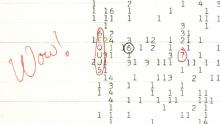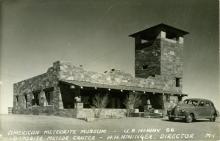Pioneer 1, NASA's first attempt to reach the Moon, is readied for launch on October 11, 1958. NASA had inherited the program, from the Air Force, just days earlier. The launch failed to push the lunar probe fast enough, however, and Pioneer 1 soon crashed back to Earth. [NASA]
You are here
First Attempt
There’s nothing like a big public failure in your first days on the job to inspire confidence. But that’s what NASA faced 65 years ago today, when it was just 10 days old. It launched its first spacecraft, Pioneer 1. The probe was aiming for the Moon. It never got there.
To be fair, the Pioneer project was created by the Air Force, which conducted the launch. It had already launched the first craft in the series, known at the time as Able-1, in August of 1958. It blew up during launch.
The project was turned over to NASA when it came into existence, on October 1st. The name was changed to Pioneer. And on October 11th, Pioneer 1 headed for the Moon. The plan called for it to enter lunar orbit. It would beam pictures and other observations of the Moon back to Earth. And on the way, it would provide details on Earth’s recently discovered radiation belts.
But the second stage of the booster rocket shut down early, so Pioneer wasn’t moving fast enough to escape Earth’s gravity. It did get about a third of the way to the Moon — much farther from Earth than any spacecraft had gone before. And it made good measurements of the radiation belts, as well as the magnetic field between Earth and the Moon. The craft was destroyed when it plunged back into Earth’s atmosphere.
Pioneer 2 was launched a month later. It failed, too. In fact, NASA didn’t score a successful lunar mission until 1964 — six years after the agency’s birth.
Script by Damond Benningfield
Get Premium Audio
Listen to today's episode of StarDate on the web the same day it airs in high-quality streaming audio without any extra ads or announcements. Choose a $8 one-month pass, or listen every day for a year for just $30.






